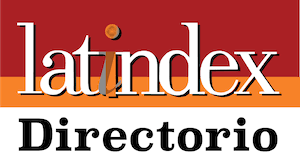Emergency Remote Teaching and natural functional curriculum at the Ann Sullivan Center Panama
DOI:
https://doi.org/10.56368/Entrelineas216Keywords:
special education, inclusive education, individualized teaching, Natural Functional Curriculum, didactic techniqueAbstract
The Ann Sullivan Panama Center offers support to students with autism and cognitive disabilities to make them independent and insert them into society, by learning skills that are useful in daily life. Applying the Natural Functional Curriculum, during the start of the Covid-19 pandemic, CASPAN implemented Emergency Remote Teaching to maintain the continuity of its distance programs. With the objective of determining the progress of the students with this methodology, the measurement of 17 weeks was carried out with the Intensive School for Families program, in a quantitative study of a descriptive and longitudinal level. With the survey technique, the instrument was designed so that the user could manage multiple response levels such as the Likert psychometric scale, whose content was confirmed through the validity of the response and expert judgment; The students were divided into 3 subgroups to measure their progress within the same group and the person responsible for monitoring at home. The results showed that with the Emergency Remote Teaching methodology, the students gained skills through the activities of the home environment and agreed to be recorded and exchange information with their specialists through technological equipment, signifying an important advance to promote remote learning. of functional skills to those who, for reasons of physical space, are not attached to any other CASPAN program.
Downloads
References
Banco Interamericano de Desarrollo. (2020). La educación superior en tiempos de COVID-19. Aportes de la Segunda Reunión del Diálogo Virtual con Rectores de Universidades Líderes de América Latina. Banco Interamericano de Desarrollo.
Bhatia, P., Davis, A., & Shamas-Brandt, E. (2015). Educational gymnastics: The effectiveness of Montessori practical life activities in developing fine motor skills in kindergartners. Early Education and Development, 26(4), 594-607. https://doi.org/10.1080/10409289.2015.995454
Bonilla Guachamín, J.A. (2020). Las dos caras de la educación en el COVID-19. CienciAmérica, 9(2), 1-10. https://doi.org/10.33210/ca.v9i2.294
Cannella-Malone, H. I., Konrad, M., & Pennington, R. C. (2015). ACCESS! Teaching writing skills to students with intellectual disability. TEACHING Exceptional Children, 47(5), 272-280. https://doi.org/10.1177/0040059915580032
Criqui, M.H.; Barrett-Connor, E.; Austin, M. (1978). Differences between respondents and non-respondents in a population-based cardiovascular disease study. American Journal of Epidemiology, 108(5), 367-372. DOI: https://doi.org/10.1093/oxfordjournals.aje.a112633
Curteza, A., Cretu, V., Macovei, L., & Poboroniuc, M. (2014). Designing functional clothes for persons with locomotor disabilities. Autex Research Journal, 14(4), 281-289. DOI: http://dx.doi.org/10.2478/aut-2014-0028
Espinoza Freire, E.E. (2019). Las variables y su operacionalización en la investigación educativa. Segunda parte. Conrado, 15(69), 171-180. http://scielo.sld.cu/scielo.php?script=sci_arttext&pid=S1990-86442018000500039
Górriz Plumed, A. B. (2001). Teoría de la mente y Síndrome de Down: revisión teórica. Jornades de Foment de la Investigació, Universitat Jaume I.
Johansson, I. (1994). Language development in children with special needs: Performative communication. Jessica Kingsley Publishers.
Joseph, L. M., & Konrad, M. (2009). Teaching students with intellectual or developmental disabilities to write: A review of the literature. Research in Developmental Disabilities, 30(1), 1-19. https://doi.org/10.1016/j.ridd.2008.01.001
Juliana, T., & Barida, M. (2020). The influence of parenting parents on the personal hygiene independence of students with disabilities. COUNS-EDU: The International Journal of Counseling and Education, 5(3), 107-14. https://doi.org/10.23916/0020200526030
Menz Queirolo, E. (2021). Impactos económicos y sociales a un año de la pandemia por COVID-19 en América Latina y el Caribe. Flacso Chile.
Ministerio de Educación, Meduca. (2020). Conéctate con la estrella. https://www.digeca.gob.pa/tmp/file/2027/REVISTA-CONECTATE-CON-LA-ESTRELLA.pdf
Peña Torbay, G. (2021). Educación virtual vs Enseñanza Remota de Emergencia: semejanzas y diferencias. Universidad Católica Andrés Bello.
Reuter, K. E., & LeBlanc, J. M. (1972). Variable Differential Reinforcement of Other Behavior (VDRO): Its Effectiveness as a Modification Procedure. Department of Human Development, University of Kansas, 1-16. https://files.eric.ed.gov/fulltext/ED135472.pdf
Sotelo, R., & Dacuña, V. (2019). Currículum funcional natural y su aplicación con familias y profesionales. En XI Congreso Internacional de Investigación y Práctica Profesional en Psicología. XXVI Jornadas de Investigación. XV Encuentro de Investigadores en Psicología del MERCOSUR. I Encuentro de Investigación de Terapia Ocupacional. I Encuentro de Musicoterapia. Facultad de Psicología-Universidad de Buenos Aires.
Unesco. (2020). Incluir a los educandos con discapacidades en las respuestas educativas al COVID-19. https://www.unesco.org/es/articles/incluir-los-educandos-con-discapacidades-en-las-respuestas-educativas-al-covid-19
Unesco & Cepal. (2020). La educación en tiempos de la pandemia de COVID-19. Unesco-Cepal.
Unicef. (2014). Definición y clasificación de la discapacidad. Unicef.
Unikel, O. M., Monroy, E. M. S., Curcó, P. R., & Benavides, A. A. (2021). Análisis comparativo del uso de gestos en niños con desarrollo típico, Trastorno del Espectro Autista (TEA) y Síndrome de Down (SD). Signos Lingüísticos, 17(33), 168-204. https://signoslinguisticos.izt.uam.mx/index.php/SL/article/view/328/282
Vidriales Fernández, R., Gutiérrez Ruiz, C., Sánchez López, C. E., Plaza Sanz, M., Hernández Layna, C., & Verde Cagiao, M. (2021). El alumnado con trastorno del espectro del autismo en España. Análisis de la distribución autonómica y de los modelos educativos existentes. Confederación Autismo España.
Wehmeyer, M. L. & Kelchner, K. (2010). Education and training in mental retardation and developmental disabilities. JSTOR Archival Journal & Primary Source Collection, 29(4), 265-278. https://www.jstor.org/stable/i23874811
World Health Organization. (1980). International Classification of Impairments, Disabilities and Handicap (ICIDH): A manual of classification relating to the consequences of disease. World Health Organization.
Downloads
Published
Issue
Section
License

This work is licensed under a Creative Commons Attribution-NonCommercial 4.0 International License.
You are free to:
- Share — copy and redistribute the material in any medium or format
- Adapt — remix, transform, and build upon the material
- The licensor cannot revoke these freedoms as long as you follow the license terms.
Under the following terms:
- Attribution — You must give appropriate credit , provide a link to the license, and indicate if changes were made . You may do so in any reasonable manner, but not in any way that suggests the licensor endorses you or your use.
- NonCommercial — You may not use the material for commercial purposes .
- No additional restrictions — You may not apply legal terms or technological measures that legally restrict others from doing anything the license permits.










